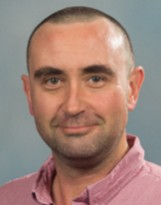
David Sand, Associate Professor, Dept of Astronomy & Associate Astronomer, Steward Observatory, UA
Tuesday, September 27, 2022,
2:30-3:30 pm,
ASA Koffler Great Room
Note Special Day and time!
One of the discoveries of the now three-decades-old Hubble Space Telescope was an image of a “blue blob,” a star system consisting only of “young,” blue stars. Neither galaxies nor ordinary star clusters, these mysterious “blue blobs” are isolated from nearby galaxies and seem to be an entirely new type of star system.
According to our speaker, David Sand, “stars tend to congregate together, almost always due to the force of gravity. A galaxy is a stellar aggregation of millions or billions of stars gravitationally bound together, and also composed of gas, dust and most likely dark matter.” Although other types of stellar clusters, smaller in size, have been recognized for over a century, Hubble Space Telescope imaging was essential for teasing out the properties of these new stellar systems. In this lecture Professor Sand will talk about one of these newly recognized types of stellar system, distinct from anything we have known before, formed through the “stripping” of gas in the extremely hot environments between galaxies.
He will also talk about a new “Citizen Science Project” by means of which we are beginning to discover many more examples of this new type of stellar system than had been spotted by professional astronomers.
Dr Sand received his Ph D at the California Institute of Technology in 2006. He is an observational astronomer with a variety of interests who spends a lot of his time searching for and understanding the smallest galaxies in the Universe, those dominated by extremely dark matter that are signposts for stellar structure formation. He also strives to understand the progenitors and explosion mechanisms of supernovae.
Preview compiled and edited by Michael Chriss and Suzanne Ferguson, Academy Village Volunteers
